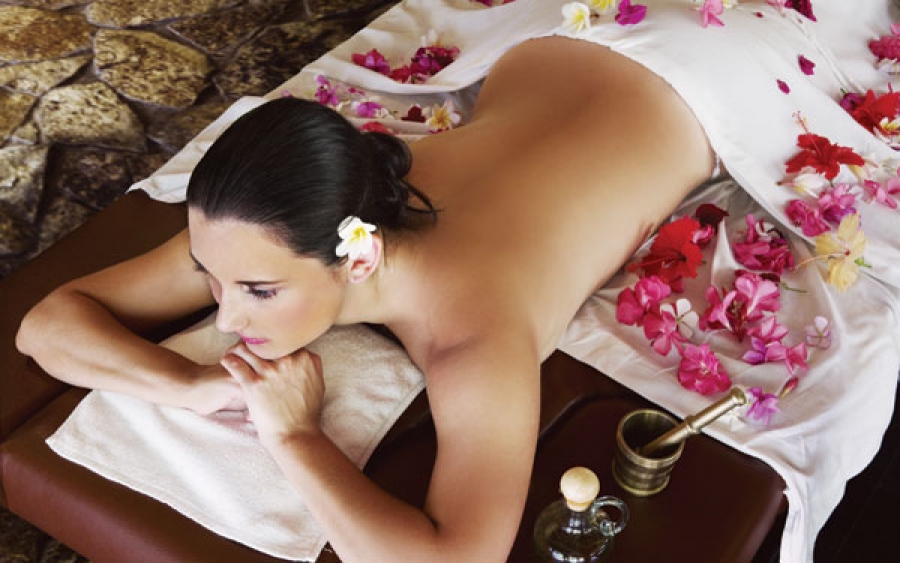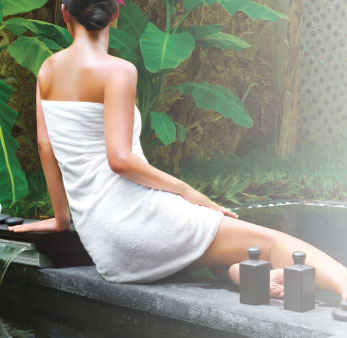 Because of this life science's longevity, one could say that Ayurveda has seen it all and covers it all. It is as relevant today as it was at its inception.
Because of this life science's longevity, one could say that Ayurveda has seen it all and covers it all. It is as relevant today as it was at its inception. And yet, Ayurveda, at its core is a set of principles; principles that are used to look at the world we live in and what we need to live sustainably and vibrantly in that world. Thus, whilst there are truly wonderful treatments from the Indian and Tibetan tradition of Ayurveda that are easily adapted to the spa and beauty industries of today, any treatment, any product you use, can be understood and applied from an Ayurvedic perspective.
But, before we get carried away, let us look at what specifically makes an Ayurvedic treatment unique. Let us begin with the goals:
- To use simple, heartfelt, hands on techniques to bring about a better integration of mind and body.
- To offer the perfect touch to release the free flow of subtle physical and mental energy to restore a client's natural balance and give a lasting sense of relaxation.
- To help clients experience the deep pleasure of a healthy body, clear mind, and balanced life.
- To teach that lasting beauty comes from feeling inspired to show love and kindness as much as possible even in these difficult times.
No doubt, such goals would apply to any treatment offered with love and care. But, Ayurvedic makes it a science. Through discovering each client's personal balance of energies (known as Vata, Pitta, and Kapha) and working with them, Ayurvedic treatments are specifically honed in on helping the client to look good, feel well, and be inspired to live more kindly and gently on this planet.
And herein lies the key. If you take the time to understand the principles of Ayurveda, you will, in fact, be able to create, execute, and see the benefits of products and services like you have never experienced them before. Of course, as the spa industry embraces Ayurveda, and Ayurvedic services become increasingly popular, there is a real danger that many new treatments will be invented and called Ayurvedic this or that. We are saddened when we see treatments or products labeled as being "Ayurvedic" that do not demonstrate a true understanding of the principles. That is why we feel compelled to offer here what we have learned makes a treatment Ayurvedic in the hopes that some wonderful spa experiences will be created that will fully honor the tradition and serve the needs of clients.
The Principles
Here are some of the more important principles upon which Ayurvedically inspired treatments rely:
1. There is a total and intimate connection between human life and nature. The same forces that harmonize our universe work in our bodies. We are intimately connected to one another and everything else in the universe. Ayurveda recognizes five of these forces each with distinct characteristics that it describes as being like space, air, fire, water, and earth. These forces are always at work around us and in our bodies. They change and shape the ways things are, and are in control of all functions in our world. In the Orient, these are known as the Five Transformations; in Ayurveda, they are called the Five Great Elements or Maha Panchabhutas. We use these five elements always, sometimes in a balanced way, sometimes not. When we do not work with them in a balanced way within ourselves or the world around us, we experience stress and dis-ease. Thus, Ayurveda seeks to create a balanced use of the elements in healing and creating wellness. In the spa setting, we try to do just that in the environment and ambiance we create, and the treatments that we offer.
Space: the stage we set for clients to have memorable experiences, the space we create so the client can feel uplifted, inspired, relaxed, and motivated.
Air: the atmosphere of the treatment room and spa facility that should feel fresh, warm enough, and filled with pleasant aroma, with a feeling of both vitality and support.
Fire: the heat of the sauna, hot tub, steam, wraps, the warmth of the oil, our passion for offering treatments, and the depth of understanding we show our clients and the intelligence we bring to our work.
Water: the liquid used for bathing, steaming, cleansing, relaxing in, exercising in, in our adaptability in working with our clients, to establish a flow and trust our intuition
Earth mud wraps, clay masks, our sense of confidence, and reliability.
2. The elements dynamically combine in the human body. Working together in pairs they organize all the bodily functions that are necessary to life. These are the doshas of Vata, Pitta, and Kapha. The way we look, think, behave and feel is the result of a unique combination of these subtle energies. They influence our being on a physical, mental and emotional level. They are responsible for our similarities and our differences and they are wonderfully helpful in customizing treatments to make the best fit possible for the needs of each individual client. Paying attention to the following list of attributes of these three energies and their effects on our clients will go a long way in making what you offer Ayurvedic.
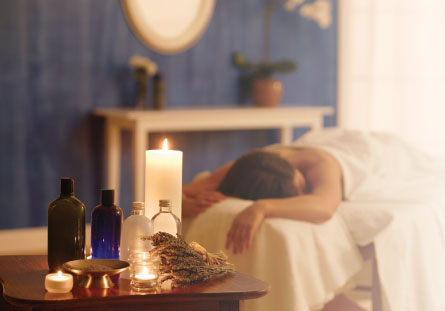 Vata, Pitta, and Kapha are present in each of us. But, they vary in proportion. This is the cause for what is known as prakruti or our Ayurvedic constitution. This is what gives us our uniqueness. At the same time, we have our daily condition or vikruti; how our constitution is influenced by our lifestyle and the circumstances we find ourselves in. In the spa environment, it is the condition that we are especially more aware of and need to address. This will mean that you will see one of these energies, Vata, Pitta, or Kapha out of balance.
Vata, Pitta, and Kapha are present in each of us. But, they vary in proportion. This is the cause for what is known as prakruti or our Ayurvedic constitution. This is what gives us our uniqueness. At the same time, we have our daily condition or vikruti; how our constitution is influenced by our lifestyle and the circumstances we find ourselves in. In the spa environment, it is the condition that we are especially more aware of and need to address. This will mean that you will see one of these energies, Vata, Pitta, or Kapha out of balance.
When someone's constitution or condition is dominated by Vata: They appear more like the ectomorphic western body type. Their skin and hair is drier and their joints more sensitive. They are sensitive to touch and sound. They are often troubled by pain that moves around the body close to the surface and are sensitive to cold and changes in temperature. Thus, they may exhibit symptoms related to poor circulation. If your client reports being, or you observe that, they are nervous, tense, easily fatigued, fidgety, overly talkative, and subject to mood swings, these are all signs of dominant Vata.
When someone's constitution or condition are dominated by Pitta: They appear more like the mesomorphic, athletic type or exhibit a more type-A personality. They have fair, fine, thinning, or premature gray hair; their skin can be fair, easily freckled, or it is reactive to heat and inappropriate lotions, oils, et cetera…. They are sensitive to sights and tastes. Such clients are often troubled by chronic tension or sharp localized pain and inflammation is common in muscles and joints. Thus, they can be very reactive or emotionally evocative when touched. Pitta clients are intense, work hard, play types that can burn out. They exhibit tendencies of being controlling. They can be your most demanding clients.
When someone's constitution or condition are dominated by Kapha: They are the rounded, more densely built endomorphic body types. They are sensitive to tastes and smells. These clients are prone to carry extra weight, often experiencing swelling, congestion, or water retention. Their pains are usually deep and dull in nature. It takes time to establish a relationship and trust with such clients and they are hard to motivate. Not necessarily expressive of emotion. These are your grateful, but quiet clients.
Knowing this information about our client, whether it is to understand in-depth their constitution or their daily condition, will help you to properly apply a traditional Ayurvedic Indian or Tibetan treatment or any treatment for that matter. The following suggestions are based on our experiences with clients on how best to meet their body/mind type needs; but they are not hard and fast rules. Let us look at the entire treatment environment, from lighting to products from an Ayurvedic perspective:
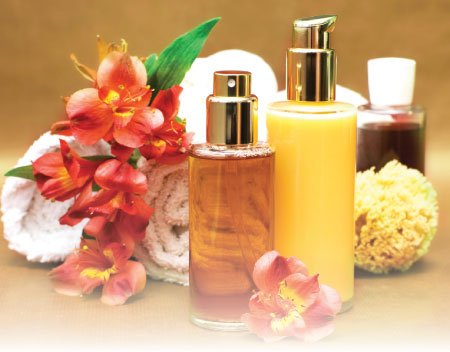
Lighting
Vata - these clients are happy to be treated like a baby. They are comfortable in womb-like spaces where the lights are dim and the atmosphere is safe and inviting.Pitta - these clients need to see that the room is spotlessly clean and tidy but have eyes that are very light sensitive. Any client that arrives in sun glasses, or wear glasses or contacts is more or less pitta. Lights that are bright initially and then dimmed work, as well as overhead lights that can be switched off leaving a small side light. Overhead lights even very dim ones can feel like torturous interrogation, so use eye pads or eye pillows when you can. Be aware that changes in light are particularly jarring so make these transitions gentle.
Kapha - in many things they like the delicate and pretty so think of this when you select light fixtures. They fall asleep most easily so if you do not want them to miss the whole experience keep the lights a bit brighter than you would normally consider.
Temperature
Vata - these are the clients that feel the cold the most and find it very hard to relax if there is the slightest draft or change in temperature. Keep the room warm and cozy, the table pre-warmed, but turn off electric blankets before the treatment begins. Warm your hands before you touch and warn your client if a product or equipment is going to feel cool.
Pitta – these clients have a need for the air to feel clean and fresh. Of course you do not want your client to freeze but they may be happiest with a window opened a crack and/or a small fan moving the air. Too much heat will make them irritable and uncomfortable.
Kapha – such clients behave like a cat always seeking the perfectly comfortable spot in a sheltered sunny corner. The middle range of temperature is perfect.
Linens and Bed Covers
Vata - flannel sheets and down comforters covered in soft or raw silk
Pitta - crisp white cotton sheets, the best quality available with cotton blankets
Kapha - interesting colors or designs such as flowers or paisley with mohair wool or chenille blankets.
Colors Used in Décor and/or Bedding
Vata - warm soft shades and darker blue like glass bottles
Pitta - white, cream, colors in nature – sea green, sky blue
Kapha - strong rich color and bold designs
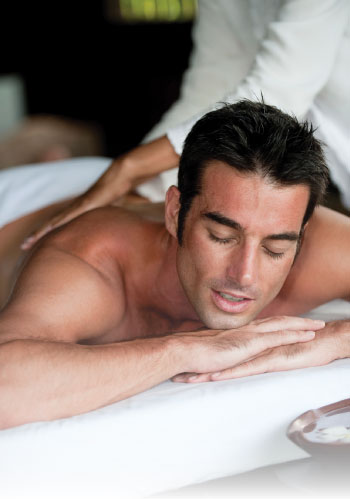
Type of Touch
Vata - slow, even, long, nourishing strokes or gentle circles offered in a consistent, even, predictable manner. Beware of very thin clients demanding deep work they are feeling a need for a quick energy boost. Encourage them to experience the feel of a deeper renewal that comes from more subtle work. Even the subtlest work that does not involve touching the body such as Reiki or palm healing can be felt in a very tangible way by those who are constitutionally or conditionally more Vata.Pitta - precise, well educated, even work that encourages the body tissues to fill out into space by emphasizing movements that come away from the body rather than just pushing in. They may ask why you are doing what you are doing. Give them a good sound reason (they will not be impressed if you tell them that your spirit guide or their totem animals are guiding you). Thus, they can relax, knowing that you know what you are doing.
Kapha - firm, energetic, and variety of styles. You want to keep them energized and interested in the treatment, so be lively and creative. Gentle movements that mobilize lymph are very useful too.
Music
Vata - calming gentle sounds of wind instruments such as flute. Vocals are too distracting.Pitta - soothing sounds of nature or intricate strings
or piano
Kapha – inspiring and upbeat, such as light jazz
Your Demeanor
Vata - encourage silence and communication on a more subtle level. Do not initiate conversation and answer questions briefly. Some clients need permission to be quiet or have the value of silence pointed out to them. Asking, "can we be quiet together for a few moments?" often works.Pitta - be ready for precise questions and well meant critique. If you do not know the answer to the question, do not bluff or you will be found out. It is perfectly respectable to say you will find out and let them know, do remember to follow through. If too much detail is being asked for; suggest time for discussion at the end of the treatment, a brochure or book for them to read, or make a separate consultation time in order to more fully answer all of their questions.
Kapha - a few words from the therapist so the client can sink into deep sleep and wake feeling groggy is a good thing. Do not take their silence to mean they do not like or appreciate the treatment they will express themselves in other ways.
Products and Aroma
When considering what essential oils and products to use and recommend…Vata – warm oil is a panacea for Vata. Oils that penetrate, such as sesame, jojoba, and mustard are recommended. Sweet floral aromas are most appealing as they relax the mind.
Pitta – as the oiliest of the three energies, oils and products need to be light – not so penetrating. Thus massage oils that are sunflower, safflower, and coconut based are best. Think light and cool. The scents for Pitta should be light, fresh scents. And be aware that these are the people who will react strongly if what you put on them heats up or is artificially based. If you know a product is petrochemically based, you should not use them in general, but especially not for your Pitta client.
Kapha – like Vata, oils and products should be warming. But, here they should be a bit lighter. The best and most easily available base oils for massage should be almond or olive. When it comes to aromas, think rich, exotic, even woody.
Our vision of what any spa treatment should do for a client is that they should not only feel relaxed and rejuvenated, they should also feel inspired to step back into their world and be kinder and more responsive. Pampering is good – when you take the spa experience to the next level, when you hone treatments and products offered with Ayurvedic sensibility, you create a client that is not only happier with the therapist and spa, they will be happier in general.
Sharing and facilitating happiness is the greatest gift we can give another. It is what brings joy into the world. This is the deeper goal of Ayurveda. With intention and precise application of its principles, Ayurveda will make each and every spa experience both memorable and joyful. This is not so mysterious.
With a educational background and training that is as conventional as it is 'alternative,' Robert Sachs is a Licensed Clinical Social Worker, a licensed massage therapist, yoga instructor, and has been a student of Indian and Tibetan spiritual and healing traditions since the early 70s. Along with his wife, Melanie, Robert runs Diamond Way Ayurveda, the foremost promoters of Ayurveda in the spa and beauty industries. Robert and Melanie live in San Luis Obispo, Calif. They have three children, Kai Ling, Harriet Christina, and Jabeth David-Francis. 866-303-3321
